Local students thrive in rainforest research expedition
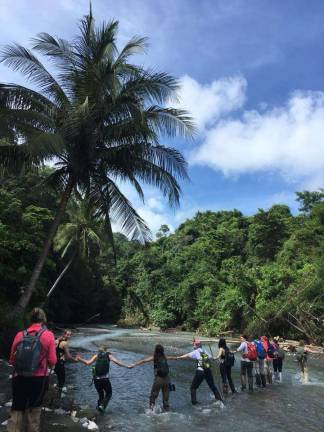
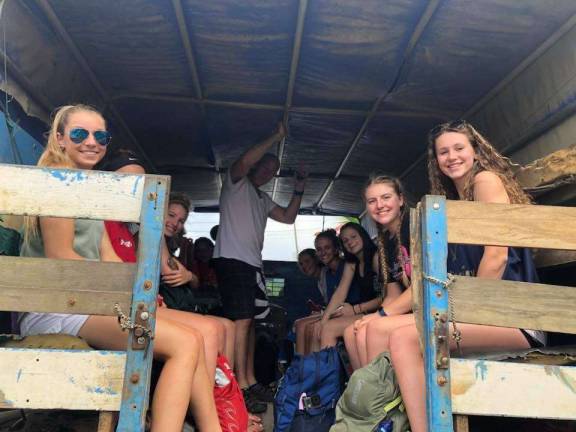
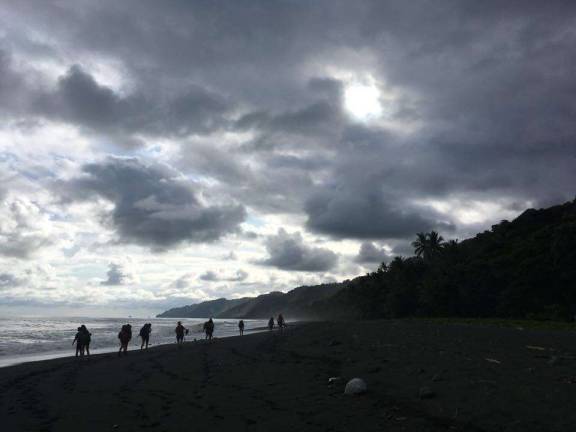
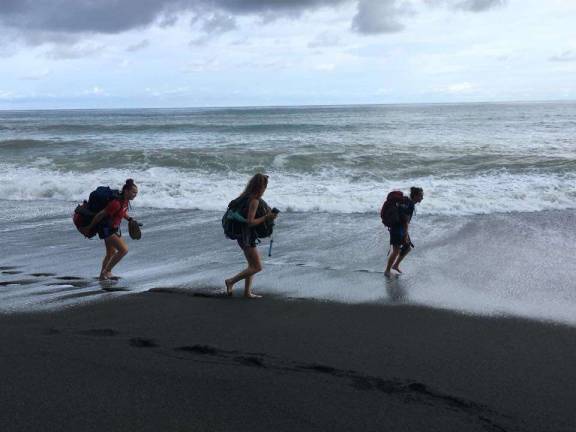
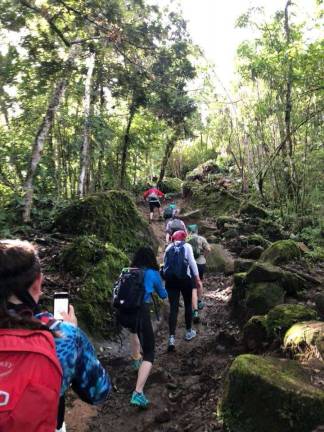
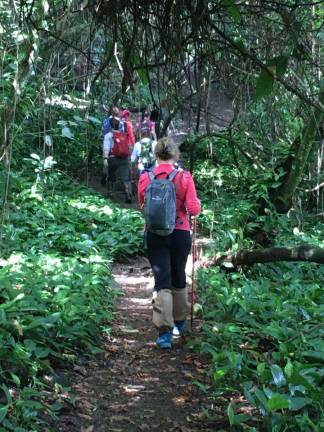
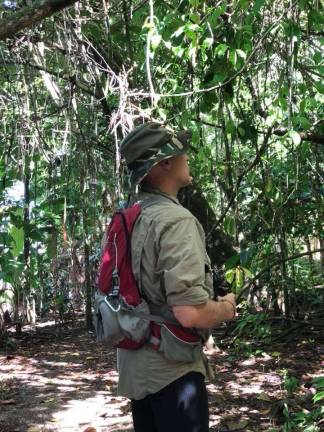
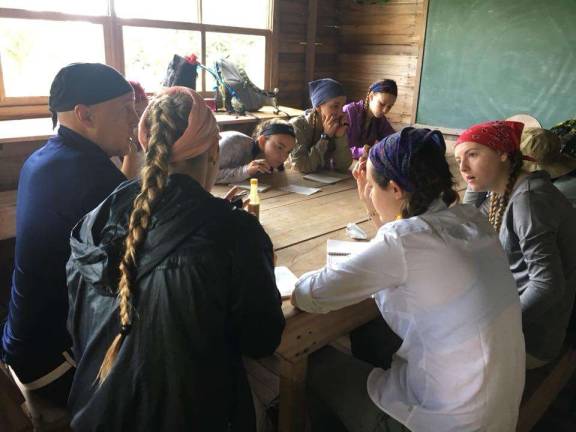
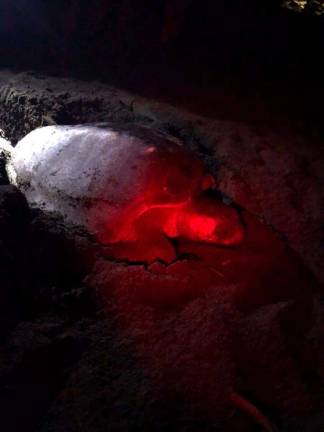
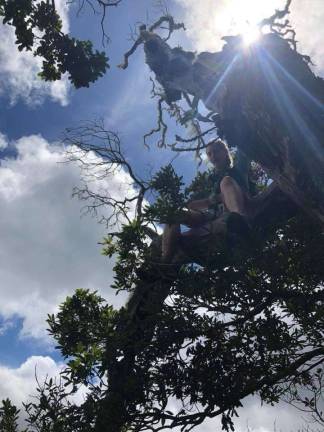
MILFORD, PA, AND NEWTON, NJ — Ten local students completed a journey in the rainforests of Costa Rica in July, a journey that began months before the June departure date as the students competed to earn a spot on the trip.
Each of the students, from Delaware Valley High School and Kittatinny Regional High School, completed a research paper on the rainforest species they planned to study while in the tropics. After the preliminary research phase, each student went through an extensive interview process. When all was said and done, ten young researchers emerged on the other side as expedition members.
The Costa Rica Rainforest Research Expedition trips are run by Tropic Guides, an organization run by local teacher Tom Miller. Tropic Guides is dedicated to bringing students and teachers to study in the rainforests of the tropics and creating memories which, hopefully, last a lifetime.
Early to riseOn June 25, at three o’clock in the morning, the students placed their army duffels in the back of a bus and climbed aboard to head for the Newark airport. After that it was all planes, trains, and automobiles. After their six-hour flight to San Jose the students were bussed to Chirripo National Park. The wake-up call at 5 a.m. brought the researchers to a breakfast and stretching session in preparation for a hike into the cloud forests of the tallest mountain in Costa Rica. The first mile is all altitude gain and particularly taxing. When the group began gasping for the thin air, Katie Orlowski, while resting, quipped that this was a no-judgement heavy breathing zone. The students completed switchback after switchback to make it to the ranger station for lunch. While consuming some much-needed calories, the researchers met climbers from several European countries.
With their Chirripo adventure behind them, the students headed for Las Cruces and Las Alturas. The region is a UNESCO World Heritage site and is considered one of the top 20 places on the planet for biological importance. It is run by the Organization of Tropical Studies which is a consortium of over 60 universities and research institutions including Harvard, Stanford, Cornell, Duke, Berkley, and the University of Chicago. The research area is over 10,000 acres adjoining the million acre Amistad International Park.
“I have never seen a region so pristine in the 30 years that I have been traveling in Costa Rica,” said Miller. "It is as though the clock had been turned back here in Las Alturas. There are tree ferns everywhere."
Counting raptorsThe group began their point counts of raptors, primates, poison dart frogs, serpents, coatis, and wild pigs at the research outpost. While doing their census work, the students climbed to the top of the Talamanca Range for an incredible view that extended all the way to Panama. This completed the second of the three legs of the research trip. It was now time for the students to get their backpacks ready for three days in the lowland rainforests on the Osa Peninsula along the Pacific Coast.
The end of the roadWith their backpacks filled with food and provisions, the students boarded a Collectivo in Puerto Jimenez, a sleepy border town on the Golfo Dulce. The Collectivo is a diesel monster truck that takes passengers to where the road ends. It literally passes right through several rivers to get there! After three hours of a bone-jarring ride they arrived at Carate, which is truly the end of the road. There, they strapped on their backpacks and started trekking north along the wildest beach they had ever seen.
The rainforest comes right down to the Pacific on the Osa Peninsula. Within 500 meters they had to link hands to cross the Rio Carate, a river that was running pretty fast that day after quite a bit of rain. One stumble resulted in some wet clothes and equipment, but other than that, the crossing was without incident.
In an hour the group came upon an eco-lodge right on the Pacific. They were ready for showers, food, and a hammock while they considered the last leg of their research. The night sounds consisting of frogs, toads, insects, and mammals were incredible at the eco-lodge.
Close encounter with angry monkeysAt about 5 a.m. it sounded as though demons were situated above their tents. All were awakened by the early morning chorus of the mantled howling monkeys announcing that this was their territory. They got their daypacks ready with full Camelbaks, protein bars, and fist aid kits. Students began their census work on the trails of the eco-lodge, which extend for miles.
The high point of the day was a group of capuchin monkeys feeding on the ground at the top of the mountain ridge. The dominant male was displeased with the presence of humans and began showing the group his canines to indicate he would like the us to depart. They obliged him, but after several hours on the trail decided it was time for the local swimming hole and some relaxation before a hike into Corcovado.
Corcovado National Park is a biological wonderland. It is one of the few places left in the tropics where you are almost guaranteed to see animals like tapir and white-lipped peccary. On the hike the students witnessed two endangered species: the scarlet macaw and the Costa Rican squirrel monkey. What was equally fascinating to the young researchers was observing two rare species of bats that make their homes within the tent-like leafs of the lower canopy of the rainforest. One, the Spix’s Disk-Winged bat, possesses suction cups rather than claws to hold on to their leafy homes.
After turning in for the evening, the students were awakened in order to view an Olive-Ridley sea turtle laying its eggs right in front of the eco-lodge! The Pacific rainforest was truly the pinnacle of an extraordinary experience in a amazing part of our natural world.
Related story"Young scientists train for rainforest trip": https://bit.ly/2Q7w2Jy